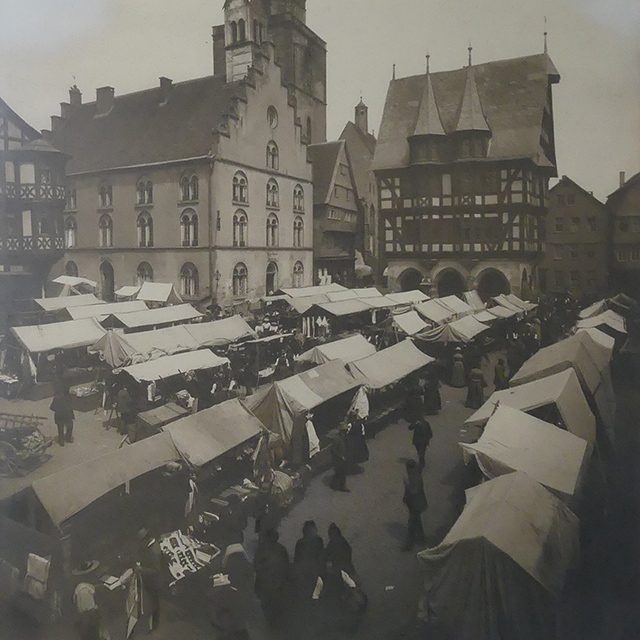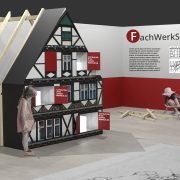1497

Whitsun market on the Alsfeld market square, photo from 1890
Alsfeld marketed!Alsfeld gets the right to hold a free weekly market
In the Middle Ages, trade was considered a municipal affair. It was mainly guilds that supervised it, and it was a matter of protectionist measures, i.e. measures that protected domestic products.
In concrete terms, this meant preventing free trade and keeping out foreign competition. One means of maintaining economic isolation was the so-called “market compulsion,” i.e., the stipulation that the sale of all goods essential to life, including the products of craftsmen, had to take place in public in the town’s marketplace. In addition, there were other important legal regulations such as the “Stapelrecht”, the “Bannmeilenrecht” and the “Gästrecht”. Intermediary trade was frowned upon, usury was reprehensible and forbidden in almost all cities. Selling prices were fixed by means of price taxes.
Since Alsfeld already had the right to mint coins around 1170, it can be assumed that markets existed much longer. A distinction was made between the municipal market and so-called “free” markets, which could be weekly markets or annual markets, which were also freely accessible to foreign traders, so that everyone, “if he was healthy and honest”, could offer and sell his goods. The oldest right to hold a “free” market in Alsfeld was granted to the town by Landgrave Wilhelm of Hesse-Kassel in 1497; market day was Saturday (“sonnobints”). MNic
